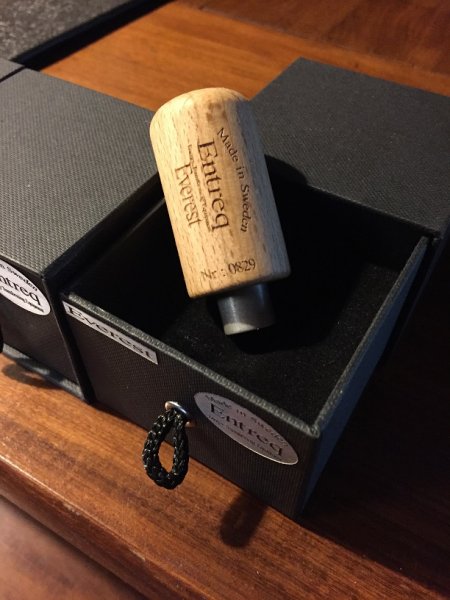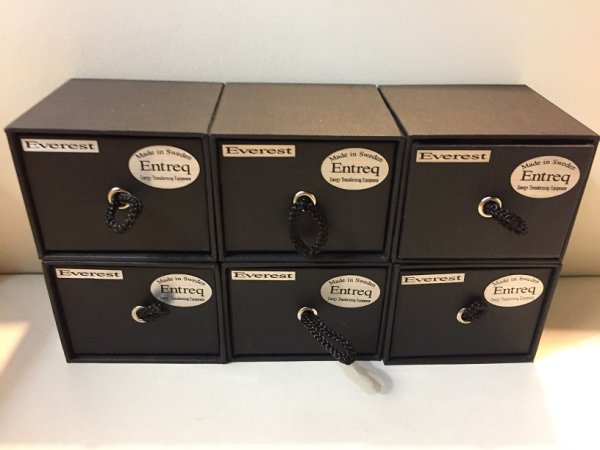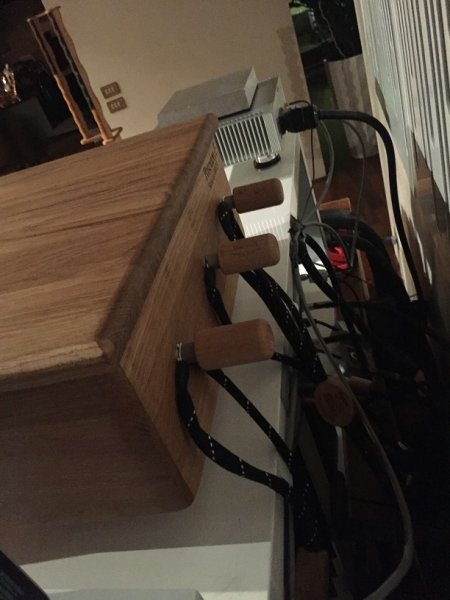I've actually now completed my audition process having determined that one only really needs to have a K2 or Everest connected to a binding post for around 3 to 4 hours to ostensibly arrive at the "final" sound. Obviously that sped up the process somewhat since I was able to audition all the proposed permutations over a few days of intensive listening. I don't dispute Barry's advice that 2 days is optimal (I am sure he is right), however observing a 48-hour protocol is likely to be impractical for audition purposes and any improvements (or changes) to the sound after 4 hours are inconsequential when compared to the initial change in sound experienced when deploying the K2 or Everest in the first instance.
As mentioned previously, I had compiled a large number of excerpts to listen to - all of them classical and all taken from my high resolution digital transcriptions of my vinyl collection (though carefully and painstakingly converted to CD format using Izotope resampling, PSP X-Dither, mastering quality Japanese SPMPT CD-R blanks burned on an audiophile quality Pioneer S09J-X burner - played back on the Rega CD player). Some 30 diverse recordings from the Decca / London, DG, Mercury Living Presence and RCA Living Stereo prevailed and all were selected because they are what I call "make or break" recordings. What I mean by this is that they can really sound good on a great setup but can sound miserable on a sub-optimal setup. These are not my best recordings by any means - as I say I just cannot see the point of listening to great recordings when choosing audio equipment. It is better to listen to average recordings since great recordings are comparatively rare and as a music-lover first, my collection only has a relatively small number of such recordings, even though I exclusively buy "audiophile vinyl".
So far as my initial fears were concerned - not being able to hear any difference versus the stock wooden knob - I need not have worried. The difference between the Everest and the stock wood knob I found to be much greater than the difference between using a plan Minimus box (with Eartha cable) and nothing at all! Amazing for such a small device given the comparatively enormous size of the Minimus. The K2, on the other hand, had a more subtle effect and was more of a supplement or an enhancement to the effect and character of the Minimus.
The main sonic difference I noted with the Everest was an extremely obvious sharpening of the midrange and top-end in particular - resulting in a significant improvement in overall focus and clarity. It was almost like employing an equaliser and taking out a smidgeon of bass out around the 30 Hz mark (which adds clarity and actually thins out the top end a little), adding treble around the 16 KHz mark and beefing up the midrange a tiny bit around 4 KHz. It really is like getting a few extra bits of resolution even though obviously none of these things can be happening on a purely technical level. To go back to my favourite TV picture analogy, the Everest is like turning up the sharpness, colour, brightness and contrast controls almost to the point where it is larger than life. And that, unfortunately, was ultimately the problem I had with the Everest. It just seemed to overdo everything more often than not. The treble and upper midrange often became fatiguing and overly fierce, possibly not helped by the improved bass clarity (which as mentioned, has a flow-on effect as to how we perceive the other frequency ranges).
I must point out at this juncture however, that the Everest improved things remarkably well when listening exclusively to extremely good recordings that are inherently well balanced to begin with and are devoid of any particularly unpleasant characteristics. My best Deccas, DG, RCA Living Stereo and Mercuries did sound noticeably better with the Everest. No question at all. Infact with great recordings, I could only sit back and marvel how a tiny piece of wood and metal could make such a difference. It made the asking price a relative bargain given that I've heard smaller differences between phono cartridges that are several thousands of dollars apart in price. Furthermore, for recordings that were perhaps a little wanting in top end resolution, the Everest was a very welcome improvement. But in the end, I found that the Everest made hard work of too many recordings despite making many recordings sound noticeably better.
The K2 was a very different kettle of fish. As I alluded to several posts ago, I wasn't terribly impressed with the K2 at first, but at the time I had only had the device connected for several minutes before attempting to appraise it. Furthermore, I wasn't taking into account the additive effect of having more than one K2 deployed, nor the effect of placing it on, say, an amplifier only versus the CD player (like the Everest it seems you can overdo it with these devices and the best sounding setup may still involve having some Entreq cables connected using the stock wooden knobs).
Sonically the K2 has a more benign impact on the sound. As mentioned it tends to enhance the character of the Minimus rather than try to turn it into something else altogether as the Everest did. The K2 does not cause the top end or midrange to sound as aggressive as they do with the Everest, however the K2 still noticeably adds definition and clarity to them - just not to the point, however where the sonic presentation became potentially irritating and fatiguing. Perhaps an analogy here is that the K2 is like swapping out stock valves (tubes) on your pre-amp or amp for a more expensive, highly regarded NOS variant. Yes, the music still does sound "sharper" and clearer, but the K2 seems to preserve a good deal of the essential "analogue warmth" of the presentation whereas I felt that the Everest made the music more "digital" in character. From a longer-term listening perspective - say a decent 2 hour session - the K2 attempts to trample lightly and with a degree of subtlety whereas the Everest wants to stomp on things - for better or worse.
I no longer feel that the K2 is merely a "low dose" Everest (or the Everest a K2 on steroids). The two devices definitely have a different character. Based upon my previous experience when comparing the plain and silver Minimus boxes, I think it is fair to say that the K2 attempts to preserve and enhance the "house sound" of the copper-based Entreq products whilst the Everest attempts to preserve and enhance the "house sound" of the Entreq products using more advanced and more expensive metal mixtures.
In summary, I feel that the Everest would be an excellent choice for listeners who are extremely picky with the recordings they own and prefer to mostly play excellent sounding recordings at moderate volume levels. I think the Everest would also do well on fully-analogue setups or high end setups using top of the line digital transports and DACs. After all, let's face it - I do not own anything like a state of the art digital front end. And if I did, it would inherently exhibit less of the undesirable characteristics of lessor equipment (such as mine) that the Everest tends to reveal and "enhance". And for that reason I am glad there is the K2 option. The K2 option, whilst clearly incapable of achieving the sonic excellence of the Everest in the right circumstances, would nevertheless appear to be more friendly to less costly systems since it is not as forensic as the Everest and is kinder to average and below average recordings.






















